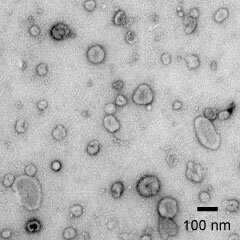Newest Posts

CELL MECHANIC
As we continue researching how life works scientists have begun trying to make simpler and simpler organisms.

SNAILS FOR LUNCH: HOW RIVER PRAWNS CAN REDUCE TRANSMISSION OF A WORM INFECTION
More than 200 million people in the world are infected by the parasitic worms Schistosoma, which can cause a devastating, organ-damaging disease known as schistosomiasis. Although a safe and effective treatment exists, schistosomiasis has been challenging to control and eliminate. One of the major reasons why is that these worms can survive in the environment in freshwater snails, creating a persistent reservoir of parasites that can infect humans. In a recent study led by Stanford scientist Susanne Sokolow, a research team developed a new method to reduce transmission of Schistosoma infections by exterminating the environmental parasite reservoirs. Their strategy? Releasing river prawns to gobble up the snails that carry these worms.

EXOSOMES: IT'S NOT THE SIZE OF THE PACKAGE THAT MATTERS, BUT WHAT A CELL CAN DO WITH IT
Scientists have known for decades that cells readily communicate with each other. To send signals close by, a communicative cell can nestle up to a neighbor that has the lock into which its key fits (yes that is a euphemism - a euphemism for ligand-receptor binding. To talk to other cells they aren’t directly touching, cells can release substances such as hormones). These substances enter the circulatory system and eventually are sensed by other groups of cells that can respond to that specific signal. We pretty much thought those were the only two broad ways that cells could talk to each other by directly touching or by releasing signaling molecules. However, in the 80s, a group of scientists first described tiny spheres, or vesicles, inside cells in a laboratory[1]. They noticed that these vesicles were eventually expelled into the cell…

